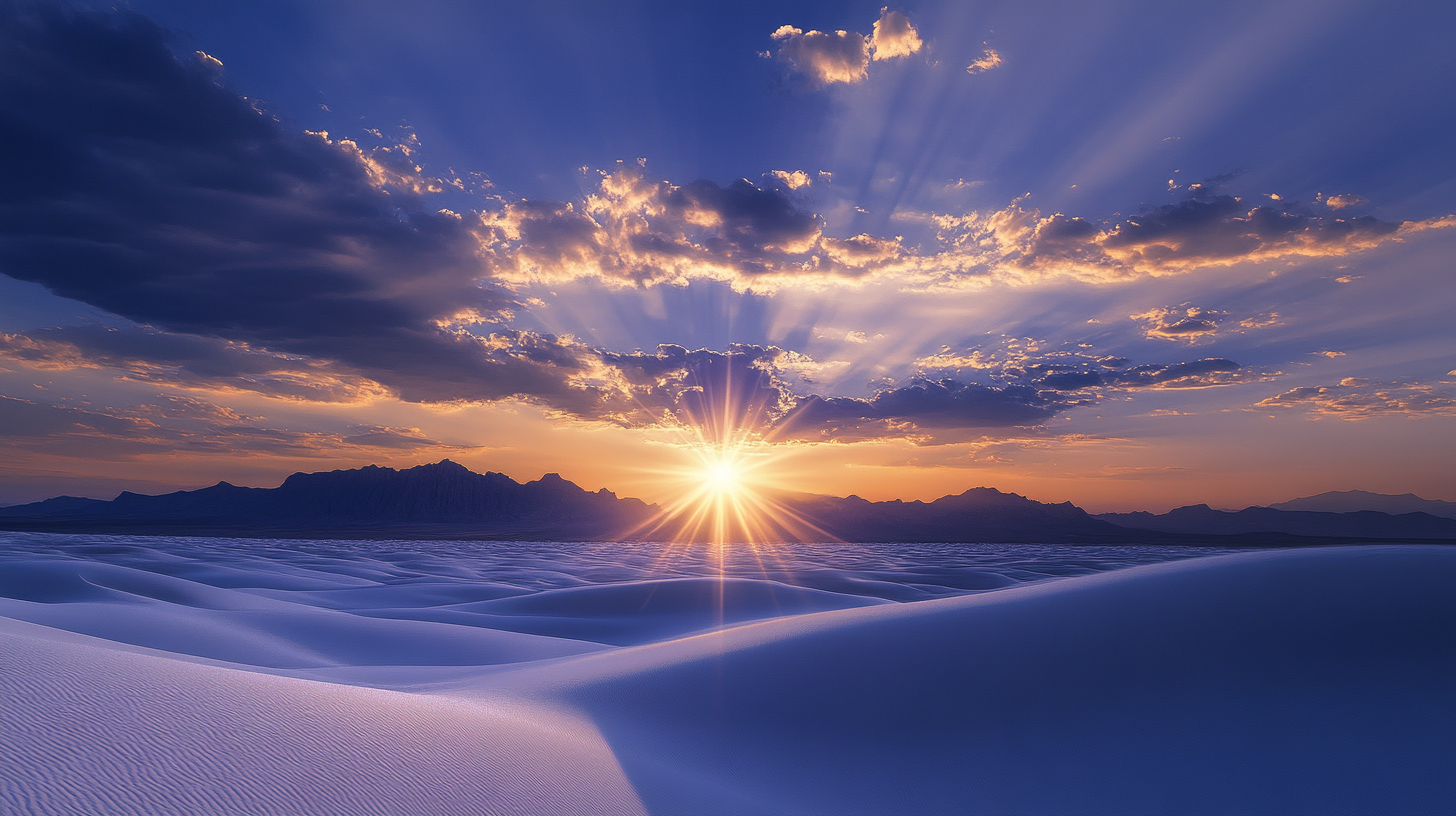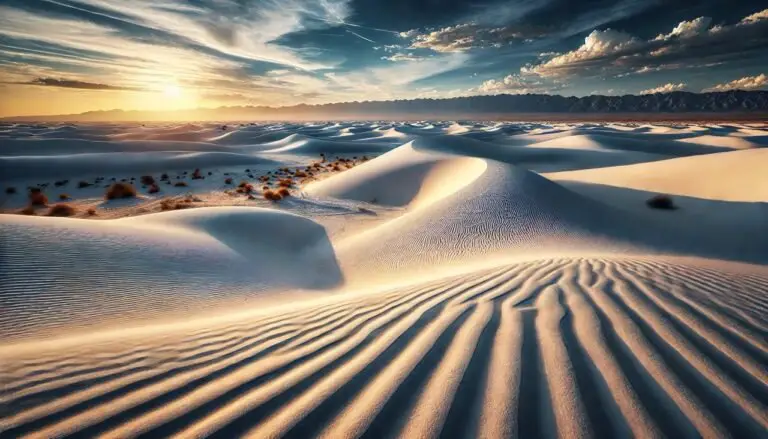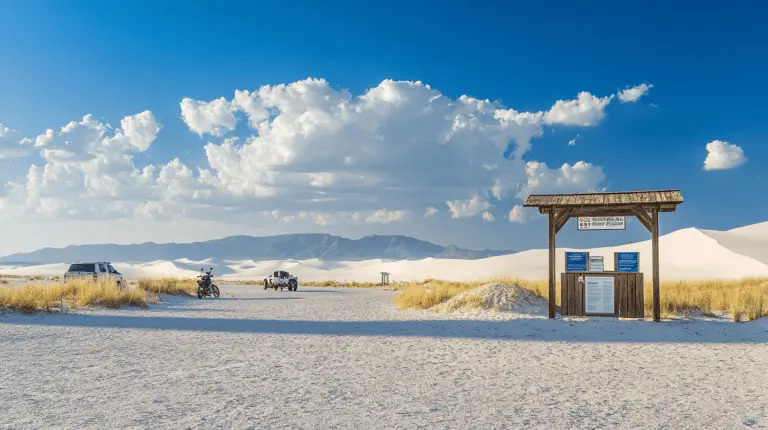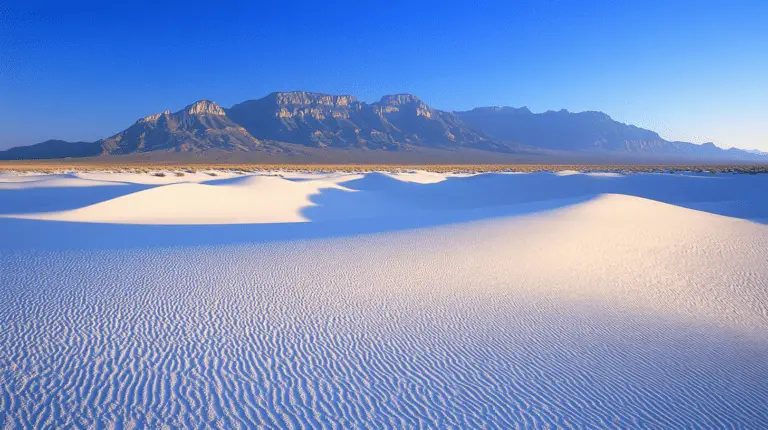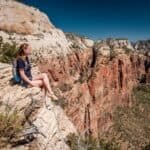White Sands National Park Photography Permit
Ready to snap some mind-blowing shots at White Sands National Park? Before you unleash your inner Ansel Adams, there’s some red tape you need to deal with. Let’s get that permit sorted without any fuss. Here’s the lowdown on what it’ll cost you, how to apply, and the easiest ways to pay.
Permit Costs and Application
White Sands National Park wants a piece of the action if you’re planning commercial filming or professional photos. They’re asking for a photo permit that costs $100, plus some extra fees depending on the project. No take-backs; once you pay, that’s it.
Here’s the cost breakdown:
| Permit Type | Administrative Fee | Extra Charges |
|---|---|---|
| Photography Permit | $100.00 | Varies with project |
| Commercial Filming | $100.00 | Varies with project |
| Weddings | $100.00 | Varies with event type |
To grab a permit, fill out the forms on the NPS permit application site and send them in as directed. Apply early so you’re not scrambling at the last minute.
Payment Methods Accepted
Paying is easy; there are several ways to do it:
- Cash: Exact amount only, no change given.
- Credit Cards: Call 575-479-6124 ext.206 to pay.
- Personal Checks: Make sure the amount is dead-on.
- Traveler’s Cheques: Yep, exact amount please.
- Cashier’s Checks: Same deal, exact amount.
- Money Orders: You guessed it, exact amount.
This should make it a breeze to get your permit while you plan your trip. For more details on what you can and can’t do, check our guides on white sands national park rules and entrance fees.
Being prepared means no surprises ruining your photo shoot. Have all your ducks in a row, get that paperwork done, and then focus on capturing those epic shots.
Photography Tips at White Sands
When you’re at White Sands National Park, you want your photos to reflect the awe-inspiring beauty surrounding you. Here are some must-know tips to get the best shots.
Best Times to Take Photos
The key to killer photos at White Sands is timing. The best light hits during sunrise, sunset, and moonrise. The park usually opens at sunrise, but if you’re an early bird willing to splurge, you can enter an hour earlier by chatting with the Park Rangers. The golden hours (two hours after sunrise and two hours before sunset) are like nature’s Instagram filter, bathing the dunes in enchanting colors.
| Time | Best Spots |
|---|---|
| Sunrise | East-facing dunes |
| Sunset | West-facing dunes |
| Moonrise | High dunes for epic wide shots |
Protect Your Camera
White Sands can be your camera’s worst nightmare if you’re not careful. Flying sand can scratch lenses, ruin electronics, and clog your camera’s guts. Store your gear in a sealed bag when not in use and steer clear of lens changes on windy days. If you can, opt for weather-sealed cameras and lenses.
Handy Camera Protection Tips
- Use a protective cover for your gear.
- Regularly clean your equipment to avoid sand buildup.
- Don’t place your camera directly on the sand—no one needs a sandy fiasco.
How to Move Around the Dunes for the Best Shots
Your movement can ruin or make your shots. Stick to walking around the edges of the dunes to keep the neat lines in the sand intact. Who wants footprints all over their perfect shot?
While exploring White Sands, don’t get lost. It’s easy to become disoriented in the vast sea of dunes. Stay safe with these tips:
- Keep an eye on trail markers and your surroundings.
- Let someone know your plans.
- Pack essentials like water and a map.
- Be prepared for changing weather.
Plan ahead, follow these tips, and you’ll have photos you can’t wait to show off. Check out more info on White Sands park hours and maps.
Happy shooting!
Tips for Nailing Your Pics at White Sands
Visiting White Sands National Park? We’ve got some killer tips to make sure your camera eats it up. Let’s dive in:
Play with the Mountains
The dunes alone are cool, but add the surrounding mountains and boom—visual feast. Contrast those white waves of sand with the darker or lighter shades of the mountains behind. It’s all about depth and drama. Check out more at white sands national park photography.
| Tip | Why it Works |
|---|---|
| Mountains in Background | Adds depth and contrast |
| Play with Colors | Makes shots pop |
Steer Clear of Tourist Tracks
Want your shots to scream “desert paradise” and not “public beach”? Skip the busy dunes. The foot traffic messes up those natural lines. Instead, wander off to the sides. Pristine sand = pristine pics.
- Dodge Footprints: Natural lines look better.
- Side Dunes: Cleaner shots, less mess.
Need to know where to walk? Here’s our white sands hiking trails.
Layer Up for Dramatic Shots
Layering in photography isn’t just for editors. Putting dunes in front with mountains in the back brings that layered complexity and contrast. Whether it’s dark mountains against white sand, or a lighter backdrop—edges make it pop (NPS – White Sands National Park).
Black and white shots? Heck yeah. It brings out the crazy contrast in light and shadows. Get pro-level tips from this Aperture Adventure guide.
| Trick | Result |
|---|---|
| Layers of Dunes & Mountains | Depth and contrast |
| B&W Photography | Boosts light/shadow play |
Want to spice it up even more? Pop a person or a lone cacti in there for size context. It makes your audience go, “whoa!” (PrettylilTraveler).
Get more ideas on killer shots, including sunrise snaps here at white sands national park sunrise and scenic sunsets at white sands national park sunset.
Staying Safe While Snapping Pics at White Sands
Heading to White Sands National Park for some killer photos? Make sure you’re not just focusing on the perfect shot, but also keeping yourself safe. Here’s some must-know advice to stay out of trouble while you capture the beauty.
Don’t Get Lost in the Dunes
Endless dunes might look amazing through your lens, but they can also get you lost real quick. Fire up that GPS and leave Hansel and Gretel trails behind you (WardynskiPhoto). Tell a buddy where you’re headed and keep an eye on landmarks by peeking over your shoulder now and then.
Must-Have Gear for Your Photography Adventure
Bringing the right stuff can make or break your photo trip—and keep you safe while you’re at it. Pack these essentials:
- Water: Guzzle at least a gallon per day; hydration’s key (Nature TTL).
- Sun-Guarding Gear: Long sleeves, a hat, and sunglasses to keep from roasting.
- Sunblock: Lather up with high-SPF to fend off those UV rays.
- Snacks: Keep your energy up with some munchies.
- First Aid Kit: Just in case the unexpected happens.
Watch Where You’re Stepping and Check the Weather
Stick to the marked trails so you don’t wander off and become part of the scenery. Mother Nature can switch gears fast at White Sands—even faster than your camera’s shutter speed (NPS – White Sands NP). Windstorms and temperature swings are part of the package, so stay on your toes.
Weather Tips:
- Hit Up the Forecast: Check out the weather before setting foot in the park (white sands national park weather).
- Map It Out: A paper map in hand is worth two on your phone (white sands national park map).
- Stay Updated: For longer trips, keep tabs on the weather with a reliable source.
By sticking to these tips, you’ll have a blast (and stay in one piece) while capturing White Sands in all its glory. Looking for more pointers? Check out our pieces on white sands hiking trails and essential photography supplies.
There you go—stay sharp, stay safe, and snap away!
Snag Beautiful Shots at White Sands National Park
Planning a trip to White Sands National Park to snap some killer photos? Let’s talk gear that’ll boost your experience and your pics.
Cameras and Lenses that Shine
White Sands is the place for jaw-dropping shots. But you gotta have the right camera and lens to do those dunes justice.
- Wide-Angle Lenses: Perfect for those sweeping scenes.
- Telephoto Lenses: Nail those far-off subjects with sharp detail.
- Camera Body: Pick one that handles low-light like a champ, for those magical golden hours and starry nights.
| Lens Type | Best For | Hot Picks |
|---|---|---|
| Wide-Angle | Landscapes | 16-35mm |
| Telephoto | Details | 70-200mm |
| Standard | Versatility | 24-70mm |
Need more deets on camera models? Check out our photography tips for White Sands.
Tripods & Filters: Your Secret Weapons
Stability and great lighting are your friends. Here’s how to lock it down:
- Tripod: Keeps your shots steady, especially in low light. Go for something light but sturdy.
- Filters:
- Polarizing Filters: Cuts glare and makes colors pop.
- Neutral Density Filters: Lets you play with long exposures to get those dreamy sand and cloud effects.
| Equipment | Why it Rocks | Must-Have Level |
|---|---|---|
| Tripod | Stability | High |
| Polarizing Filter | Color Boost | Medium |
| Neutral Density Filter | Long Exposures | High |
For when to sneak into the park for perfect light, hit up White Sands National Park hours.
Take Care of Your Gear
Sand can be a real pain. Keep your stuff safe:
- Camera Bag: Use one designed to fend off sand and grit.
- Lens Cloth: A must-have for keeping your lens free of nasty particles.
- Camera Rain Cover: Shields against sandstorms and random weather changes.
| Kit | Use | Pro Picks |
|---|---|---|
| Camera Bag | Protection | Waterproof/Sand-proof |
| Lens Cloth | Cleaning | Microfiber |
| Camera Rain Cover | Weather Proofing | Universal Fit |
Make sure you’re packed with the essentials and up-to-date with White Sands National Park regulations.
With the right gear in your kit, you’re all set to capture White Sands’ stunning moments. For more on snagging shots in this sea of sand, swing by our guide on navigating the dunes for photos.
Best Times and Seasons for Photography
White Sands National Park is a goldmine for photographers. It’s got its own charming vibe every season, and when it comes to snapping that perfect shot, timing is everything!
Seasonal Magic
Every season at White Sands National Park serves up its own flavor:
| Season | What to Expect |
|---|---|
| Spring | Cooler days, less crowding, and blooming desert plants that spruce up your pics. |
| Summer | Gorgeous blue skies, but be ready for the heat – pack that sunscreen and water! |
| Fall | Think stunning sunsets and light-play. Fall’s your go-to for getting those Milky Way shots. |
| Winter | Peaceful, stark views with hardly anyone around – perfect for those unobstructed masterpieces. |
Want to know what the weather’s like? Check out our White Sands weather guide.
Sunrise and Sunset Drama
If there’s a best time for photos at White Sands, it’s during sunrise and sunset. The light here works wonders, casting long shadows and splashy colors all over the place.
| Time of Day | Why It’s Awesome |
|---|---|
| Sunrise | Soft, gold-tinted light washing over the dunes – it’s like nature’s gentle kiss. |
| Sunset | A riot of colors dancing on the sands, making even the most amateur photo look pro. |
Pssst… We’ve got more sunrise tips here and sunset tips here.
Night Photography & Special Events
When the sun goes down, White Sands NP stars come out, literally. Nighttime here’s a photographer’s dream, with the sky putting on a show and zero city lights ruining your shots.
- Milky Way: Late September is prime time for some next-level galaxy pics.
- Full Moon: Snagging moonrise pics a couple days pre-full moon works like magic on those dunes.
- Special Events: Stuff like the Hot Air Balloon Festival in September gives you those out-there, colorful moments (Nature TTL).
Check park hours and entry fees to plan your visit and grab a map to hit all the best spots.

